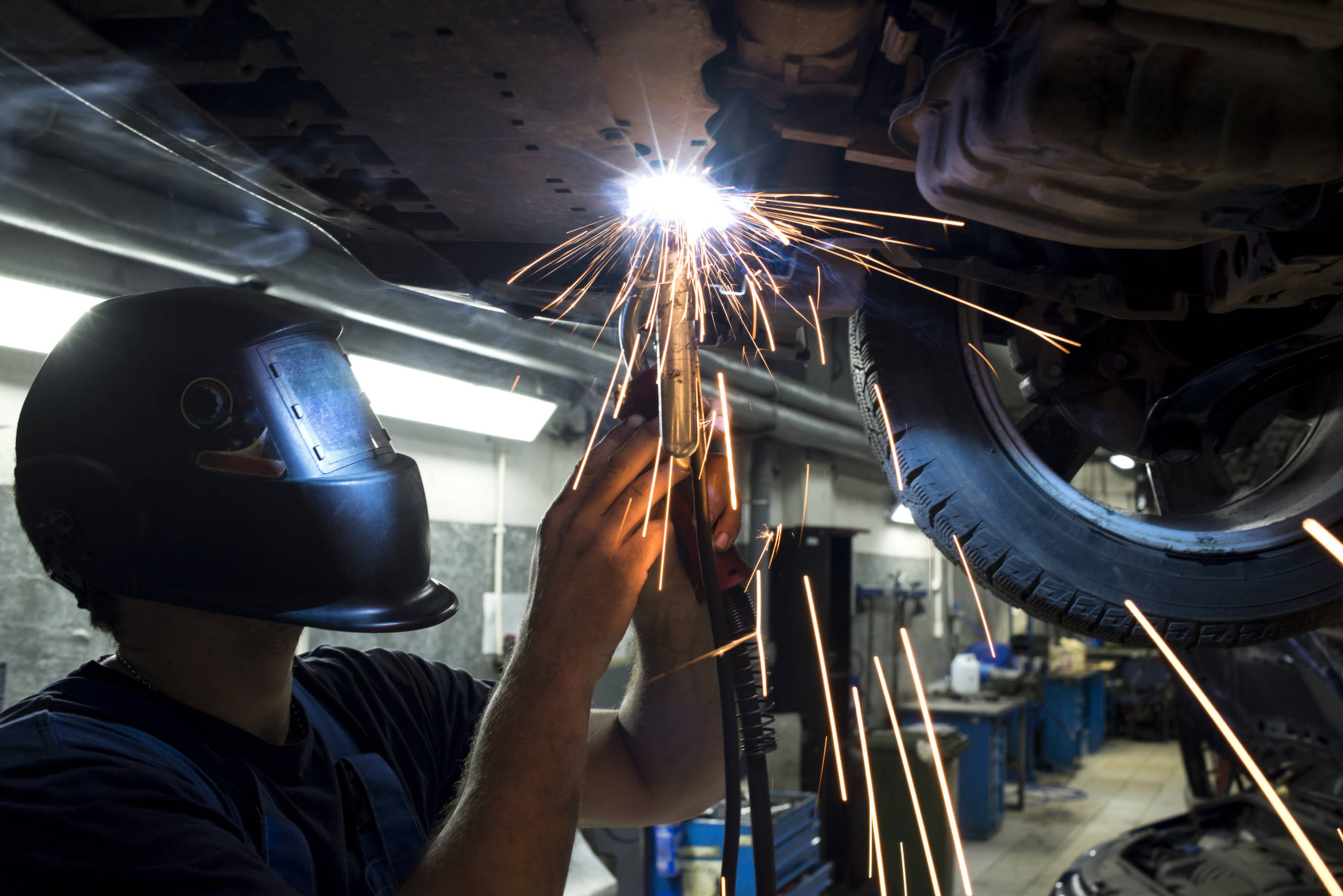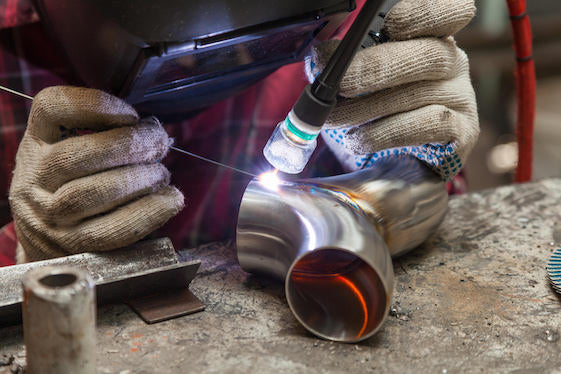Key methods to deal with warping in Montana Mobile Welding and Repair Belgrade
Common Welding Fixing Issues and How to Address Them Effectively
Welding repair work usually encounter a variety of problems that can threaten the stability of the end product. Typical problems include poor penetration, porosity, and imbalance, amongst others. Each problem provides distinct challenges that call for details strategies for resolution. Comprehending these problems is essential for welders aiming to improve their abilities and end results. This discussion will certainly discover these usual welding repair work problems and effective techniques to resolve them.
Inadequate Infiltration
Insufficient penetration occurs when the weld steel stops working to totally fuse with the base product, leading to weak joints and possible structural failings. This concern typically comes from insufficient warmth input, wrong electrode angle, or improper welding speed. Welders might come across inadequate penetration because of a miscalculation of the essential criteria for a specific material density or kind. Furthermore, contamination on the base material's surface area can prevent effective bonding, aggravating the issue. To address inadequate infiltration, welders ought to ensure ideal settings on their tools and preserve a tidy job surface. Normal examination of welds is recommended to identify any kind of deficiencies early, permitting prompt improvements and the avoidance of endangered architectural integrity in bonded assemblies.
Porosity
Porosity is a typical defect in welded joints that materializes as little gas bubbles entraped within the weld metal. This issue can endanger the stability of the weld, bring about minimized stamina and potential failure under stress. Belgrade Fabrication. Porosity normally emerges from contamination, wetness, or incorrect welding strategies, which allow gases to run away right into the molten weld swimming pool. To address porosity, welders ought to guarantee correct surface area preparation, preserve a clean working setting, and use appropriate welding specifications. Furthermore, picking the best filler material and shielding gas can minimize gas entrapment. Regular inspection and screening of welds can help recognize porosity early, guaranteeing timely corrective actions are taken, therefore maintaining the top quality and dependability of the welded framework
Misalignment
Misalignment in welding can emerge from various variables, including incorrect arrangement and thermal growth. Comprehending the origin triggers is essential for efficient resolution. Several modification methods are readily available to straighten parts and guarantee architectural stability.
Root causes of Misalignment
Welding misalignment usually stems from a range of underlying problems that can compromise structural integrity. One primary cause is inappropriate fit-up of parts prior to welding, which can cause voids and irregular surface areas. Variants in thermal growth throughout the welding process can also cause distortion, particularly if the products being joined have different coefficients of expansion. In addition, poor securing and fixturing may fail to hold parts securely in position, resulting in activity throughout welding. Badly kept tools, consisting of welding machines and tools, might introduce variances in the weld grain, further adding to imbalance. Operator error, stemming from insufficient training or experience, can additionally play a considerable function in developing misaligned welds.

Adjustment Strategies Readily Available
Addressing misalignment effectively calls for a mix of rehabilitative techniques tailored to the details concerns at hand. One typical method is making use of components or jigs to hold parts in the correct position throughout welding, making sure regular positioning. In addition, pre-heating the materials can help in reducing distortion and enhance fit-up. For significant imbalance, mechanical realignment strategies, such as utilizing hydraulic jacks or clamps, can be utilized to remedy the position before welding. Post-weld warmth treatment may likewise be necessary to eliminate anxieties triggered by imbalance. Cautious examination and modification throughout the arrangement phase can protect against misalignment problems from becoming considerable problems, promoting a smoother welding process and boosting general structural stability.
Distortion
Distortion is a common challenge in welding that can occur from numerous aspects, consisting of unequal heating & cooling. Recognizing the root causes of distortion is important for applying effective prevention techniques. Resolving this concern not just improves architectural integrity but likewise improves the overall high quality of the weld.
Root causes of Distortion
When based on the extreme warmth of welding, materials usually go through adjustments that can bring about distortion. This sensation mainly arises from thermal development and contraction during the welding process. As the weld area warms up, the product broadens; upon cooling, it acquires, which can produce internal tensions. In addition, irregular heating throughout a work surface can aggravate these stresses, leading to bending or flexing. The sort of material also plays a considerable duty; steels with varying thermal conductivity and coefficients of expansion might react in different ways, leading to unforeseeable distortions. Poor joint design and insufficient fixturing can contribute to misalignment throughout welding, boosting the chance of distortion. Understanding these causes is important for efficient welding repair and prevention strategies.
Avoidance Techniques
Reliable prevention methods for distortion throughout welding concentrate on controlling warm input and making certain appropriate joint design. Maintaining a regular warm input aids to minimize thermal growth and tightening, which can lead to distortion. Using methods such as preheating the workpiece can likewise reduce the temperature gradient, advertising consistent heating. Furthermore, picking appropriate joint designs, such as T-joints or lap joints, can boost stability and decrease anxiety focus. Carrying out proper fixturing to secure the workpieces in location further aids in keeping alignment throughout the welding procedure. Ultimately, staggered welding sequences can disperse warmth a lot more evenly, stopping localized distortion. By applying these approaches, welders can significantly lower the chance of distortion and boost the general high quality of their welds.
Breaking
Splitting is a common problem run into in welding fixings, often resulting from numerous elements such as incorrect air conditioning prices, material selection, or insufficient joint prep work. The event of cracks can significantly compromise the stability of the weld, causing potential failures during operation. To resolve this issue, welders need to initially assess the root causes, ensuring that materials work and suitably selected for the details application. Additionally, regulating the cooling price during the welding procedure is important; fast cooling can generate tension and cause fracturing. Correct joint style and prep get redirected here work likewise add to minimizing the danger. Carrying out these techniques can boost weld quality and durability, eventually decreasing the chance of splitting in ended up weldments.

Incomplete Blend
A significant problem in welding repair work is insufficient fusion, which occurs when the weld steel does not adequately bond with the base material or previous weld passes - Montana Mobile Welding and Repair Belgrade Fabrication. This defect can bring about weak points in the joint, potentially endangering the integrity of the welded structure. Variables adding to insufficient blend consist of not enough warmth input, improper welding technique, and contamination of the surfaces being signed up with. To resolve this issue successfully, welders must assure proper pre-weld cleansing and surface prep work, as well as change their welding specifications to attain adequate infiltration and fusion. Routine inspection during the welding process can additionally aid identify insufficient fusion early, enabling for timely restorative measures to boost the total high quality of the weld
Overheating
While welding repair work can improve structural integrity, overheating presents a significant obstacle that can result in material deterioration. Too much heat during welding can alter the mechanical residential or commercial properties of steels, resulting in lowered strength, enhanced brittleness, and warping. This sensation is especially vital in high-stress applications where architectural reliability is critical. Recognizing overheating can entail visual evaluations for discoloration or distortion, in addition to keeping track of click to find out more temperature during the welding procedure. To mitigate the dangers related to getting too hot, welders should employ ideal strategies, such as controlling warmth input, changing travel speed, and making use of appropriate filler products. Furthermore, applying pre- and post-weld heat therapies can help bring back material residential properties and boost the general top quality of the repair service, guaranteeing long-term performance and safety and security.
Frequently Asked Inquiries
What Are the Common Signs of a Welding Issue?

Just How Can I Evaluate My Welds for High quality?
To test welds for high quality, one can use visual examinations, ultrasonic testing, and radiographic methods. Each technique ensures structural stability, identifies flaws, and confirms adherence to specified standards, eventually improving the dependability of the welded joints.
What Safety Safety Measures Should I Take While Welding?
When welding, one should prioritize safety and security by putting on proper personal protective tools, making sure appropriate air flow, securing combustible products away, keeping a tidy office, and knowing environments to stop crashes and injuries.
Can I Fix a Weld Without Redesigning the Entire Joint?
Repairing a weld without redoing the entire joint is feasible, depending upon the damages (Montana Mobile Welding and Repair). Methods such as grinding, including filler product, or utilizing a welding process can effectively address details problems while protecting the surrounding framework
What Devices Are Crucial for Reliable Welding Fixes?
Vital devices for efficient welding repair services consist of a welding device, cable brush, mill, safety gear, clamps, and filler products. Each tool plays an essential duty in guaranteeing quality and safety and security during the fixing process. Porosity typically arises from contamination, moisture, or inappropriate welding strategies, which allow gases to escape into the liquified weld swimming pool. Poorly maintained devices, consisting of welding equipments and tools, might present variances in the weld bead, additional contributing to misalignment. When subjected to the intense warmth of welding, products usually undertake changes that can lead to distortion. Fracturing is an usual issue experienced in welding fixings, typically resulting from various variables such as try this incorrect cooling prices, product selection, or inadequate joint prep work. A significant issue in welding repair work is incomplete fusion, which takes place when the weld steel does not properly bond with the base product or previous weld passes.